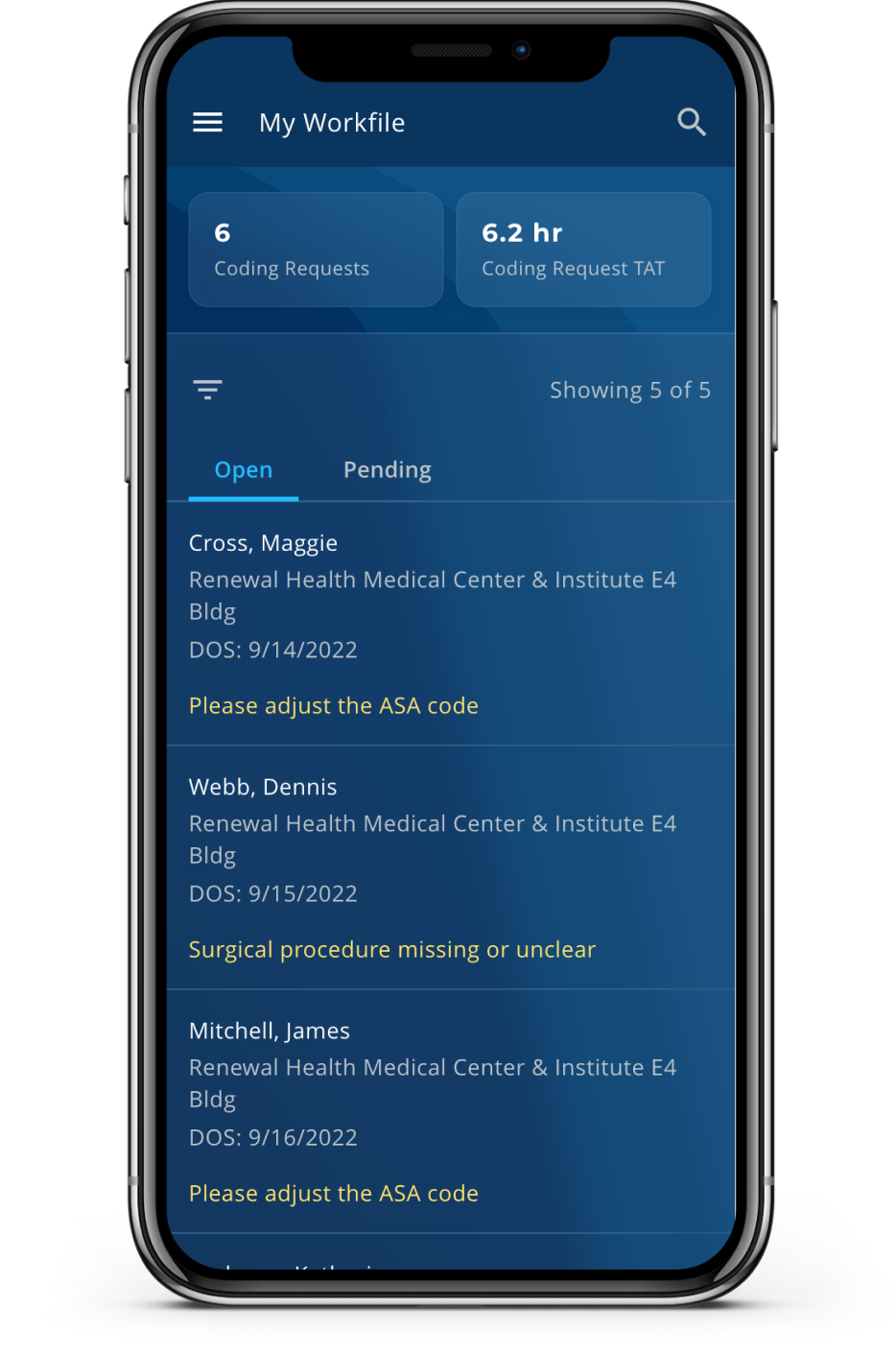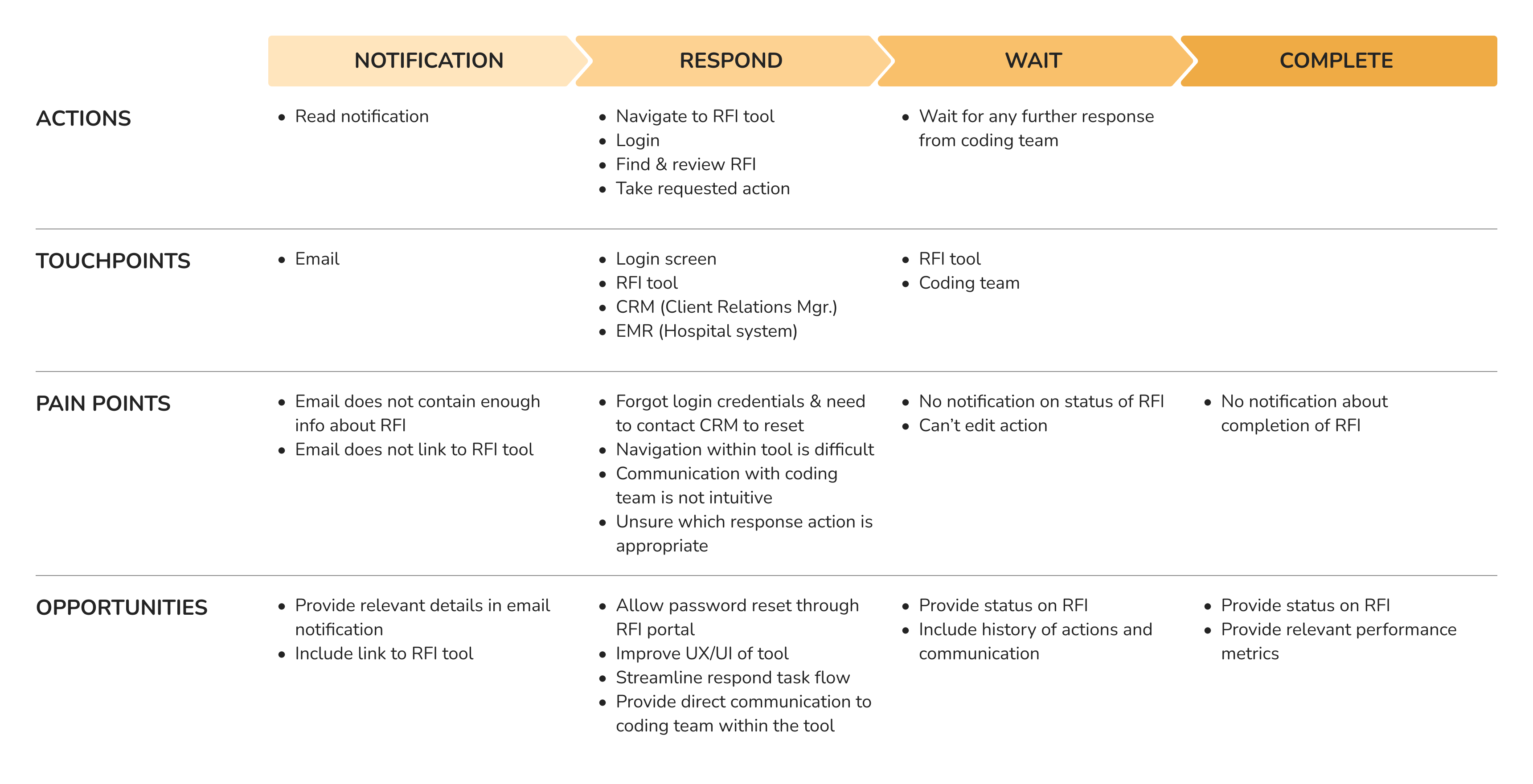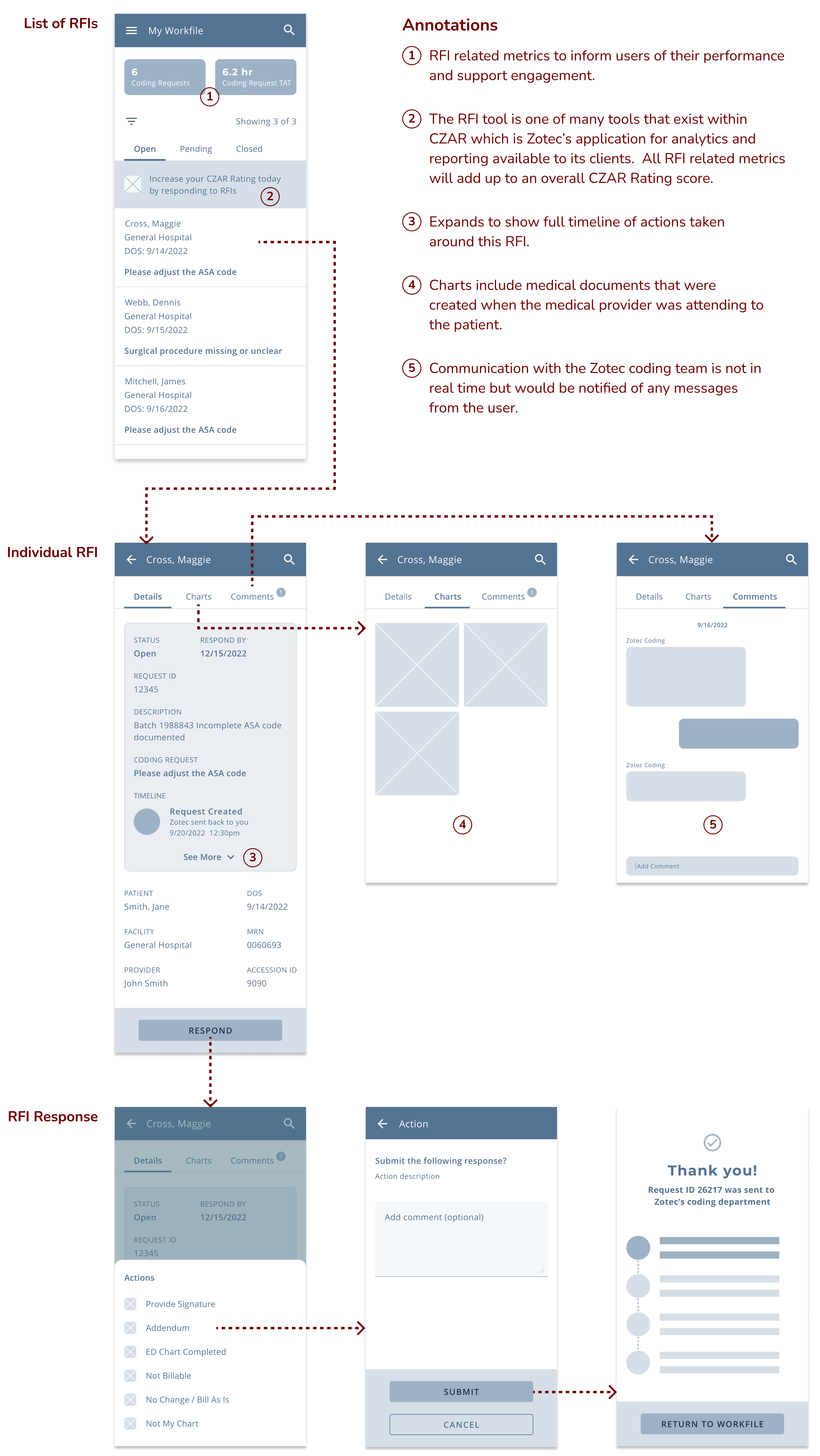Background
Company: Zotec Partners
Role: Product Designer II
Zotec Partners provides medical billing services for its clients. When a medical provider performs a procedure, that information needs to be coded so that a bill or medical claim can be created. However, sometimes more information about the procedure is needed and a Request for Information (RFI) is created. RFIs are important to the billing collection process and business goals - as medical providers respond to RFIs, Zotec can increase the rate and amount of money that’s collected for their clients and itself.
The Problem
Zotec currently provides a Coding RFI tool that supports communication between Zotec's coding team and the medical providers. However, there are a range of pain points related to this tool that slow down the workflow or discourage RFIs from being resolved at all.

Understanding Users
The two main users of the Coding RFI tool include medical providers who respond individually and administrators who manage larger practices, supporting many doctors. While medical providers are often more transitory due to their appointments and need a mobile-first solution, administrators are more stationary and desktop users.
Upon conducting interviews, a journey map (see image below) was created to visualize current challeneges and identify opportunities to add value. We then outlined the following design goals:
- Enable users to easily communicate and respond to RFIs.
- Inform users on the status of the RFI.
- Engage users to respond more quickly and frequently.


Ideation + Iteration
Initial designs began with low-fidelity wireframes and a mobile-first approach as the current RFI tool is not mobile responsive.

In meetings with users and internal stakeholders, questions arose around the meaning of various RFI response actions, which currently total 6. In order to streamline this task flow and minimize the cognitive load on users to select the correct action, it was decided to place the responsibility on Zotec’s backend and operations team to properly tag the RFIs as they’re created. This would then ensure that RFIs are routed back to the appropriate people on the coding team, rather than relying on the user’s selection. This would improve efficiency from both the experience of the user and Zotec operations.
Solution
Having streamlined the flow by reducing the response action to selecting ‘Responded’ in the most typical use case, the following diagram below represents this updated user flow. The mockups (see video) show additional design enhancements to support design goals related to communication and tracking the status of RFIs.

What I Learned
The redesign of the Coding RFI tool has yet to be scheduled for development, though there were several things that I learned in working on this project. The design of the backend and organizational workflow can impact the user experience as much as the frontend UI. Rethinking how RFIs are tagged and routed back to the coding team can minimize the burden on users in knowing and selecting and the appropriate response.